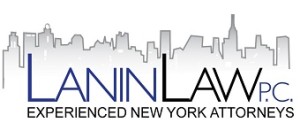On June 23, 2016, Governor Andrew Cumo signed a ground breaking bill into law requiring banks to take responsibility for “zombie” properties. The law is an amendment to Section 1307 of the Real Property Actions and Proceedings Law. Zombie properties are homes that are in foreclosure and have been abandoned by their owner, but title has yet to be passed from the owner to the bank. This period of vacancy has become too familiar in the state of New York, resulting in the deterioration of once well-kept homes. Zombie houses have been known to cause eye sores and reduce the values of surrounding homes. They also become havens for rodents and squatters.
The first part of the bill strengthens home foreclosure prevention services. The law enhances the effectiveness of Mandatory Settlement Conferences between banks and homeowners giving homeowners a better opportunity to fight foreclosure. Both parties will now be prescribed specific rights and duties and clarify how the process should work, in order to best protect homeowners and prevent them from losing their homes. Too often homeowners facing foreclosure are misinformed or choose to vacate their homes early. These laws will now ensure that homeowners understand their rights and better assist them in receiving a favorable outcome. To further assist homeowners facing foreclosure, the new bill will establish the Community Restoration Fund (CFR). The CFR will purchase defaulted mortgage notes from other lenders and offer favorable mortgage modifications, allowing homeowners to reduce their monthly mortgage payments and remain in their homes. CFR will also have the ability to forgive a portion of a homeowner’s loan based on recent hardship, such as lower monthly income and homeowners who have experienced a large decrease in property value.
The foreclosure process can be lengthy, with New York properties averaging about three years per foreclosure. Often homeowners vacate before the process is completed and before the bank secures official ownership of the property. This time period, is often when houses begin to deteriorate. Currently there are about 16,000 vacant properties throughout the state of New York. Prior to the enactment of this bill, banks had no obligation to care for these vacant properties until the title was officially turned over to them at the end of the foreclosure proceeding. According to a report last year by Newsday, a yearlong analysis found that local municipalities in 2014 spent more than $3.2 million to maintain vacant houses and that such properties cost Long Island at least $295 million in depreciated home values.
The passage of this bill will now require banks to take action on abandoned homes within 15 days of discovering their vacancy. Banks will be required to board up windows, maintain pipes, and fix safety issues within the 15 day period. Failing to fulfill the upkeep requirements will result in a fine of up to $500 a day for the banks. Additionally, the local government or the state can come in, claim the property and maintain it themselves.
Local residents have the opportunity to ensure that appropriate action is taken by both banks and municipalities. A new database and toll free hotline will assist in keeping track of abandoned properties. The toll free hotline—800-342-3736—can be used by residents to find out information on vacant neglected homes and report them. In addition residents can report vacant, ill-maintained homes online at www.dfs.ny.gov. All reported information will be entered into a database maintained by the state Department of Financial Services who will ensure appropriate measures are taken regarding the abandoned houses. This groundbreaking legislation will finally provide the relief needed to combat vacant properties to cities and towns throughout New York State. Most important of all, these new laws will better assist families in staying in their homes and overall improving the lives and communities across the state.
My firm has had experience with this issue. We represented one couple who filed a Chapter 13 bankruptcy in the United States Bankruptcy Court for the Southern District of New York, White Plains. We confirmed a Chapter 13 plan that provided for the debtors to surrender their property to the mortgagee. The property sat idle and the lender refused to foreclose, even ignoring letters that I sent to it asking it to complete a foreclosure. It may seem hard to believe but the lender did not want to do anything to recover its money. The mortgage loan had been assigned and it was not even clear who the lender or servicer was at different points in time. The debtors received notices that they would be fined if the property was not maintained with respect to garbage and the lawn, etc. They received real estate tax notices. Ultimately, they decided to move back into the house and make the best of it since their lender was not doing anything.
For more information on Zombie Homes and the recent legislation see:
The Official Site of New York State
Special thanks to Christopher Whelan, Brooklyn Law School JD Candidate 2018, for his assistance in writing this post.


